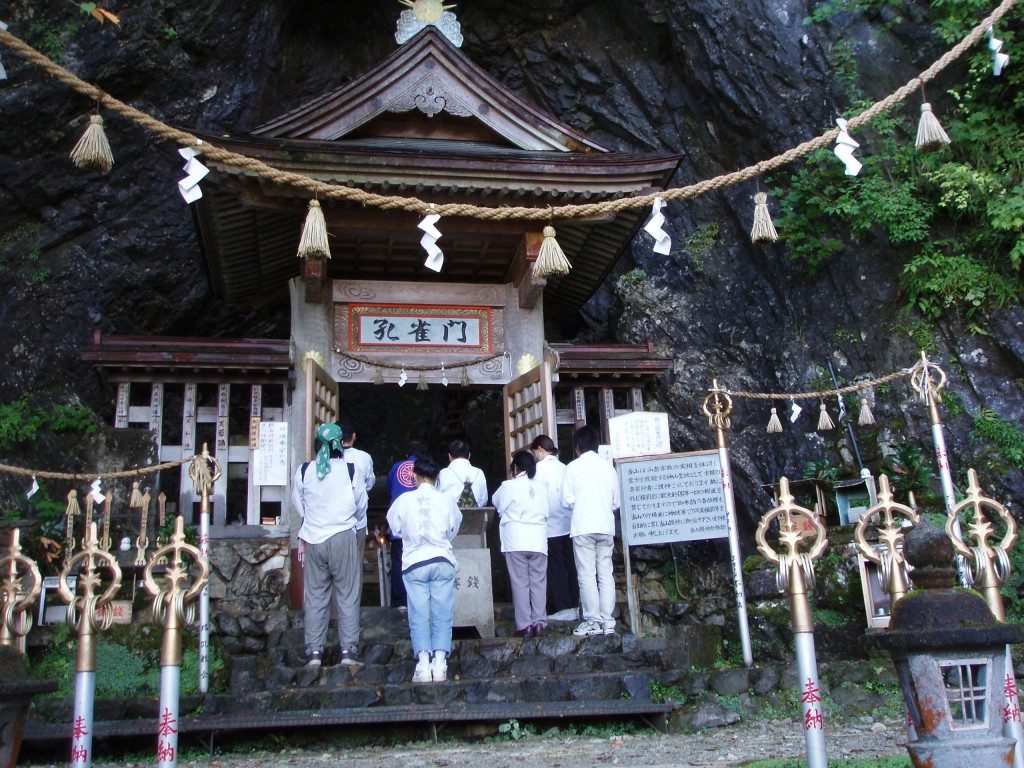
Prayer prior to entering a cave used for ascetic purposes at Dorogawa Onsen
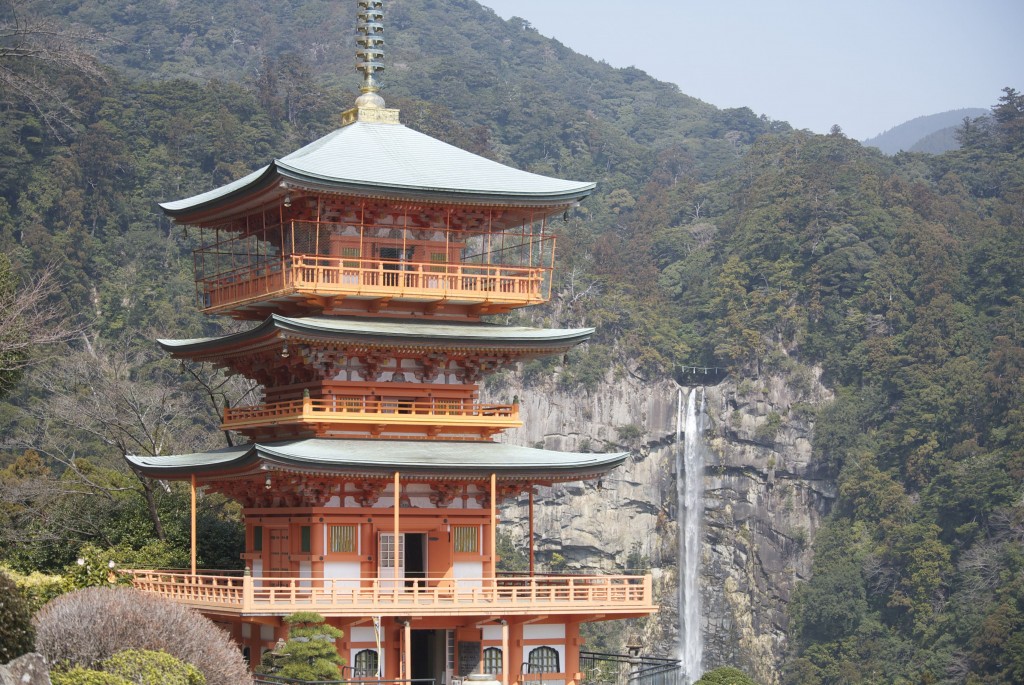
The Seigantoji temple, to which the shugendo group in the article below are attached, is next to Nachi Waterfall, tallest in Japan
Mountain asceticism alive today: Kumano journey refreshes body, mind
by Masahira Ueno / Yomiuri Shimbun Staff Writer January 28, 2014
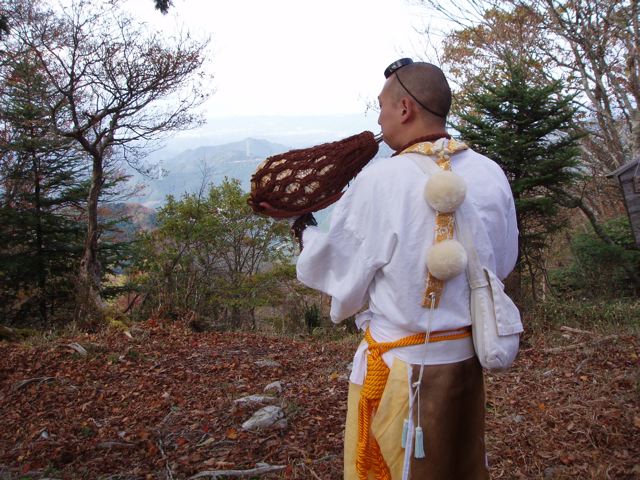
A shugendo follower blows his horagai conch horn on top of a hill
NARA—Deep in the Kii mountain range, the sounds of horagai triton shell horns echo around Sho no Iwaya, a cave where mountain ascetics are said to have once spent the winters during their mountain-dwelling shugendo practice to develop their spiritual experience and power.
Kumano Shugen, a group of about 30 mountain ascetics based at Seigantoji temple in the Kumano district of Wakayama Prefecture, visit the cave every December as the conclusion of that year’s shugendo practice.
The Kii mountain range encompasses many peaks as high as about 1,500 meters and stretches across the Kii Peninsula. Since ancient times, the mountains have been worshiped as a sacred place and have been the site of numerous shugendo ascetics’ practice.
Shuichi Sakamoto, 61, is an experienced member of the group who serves as its guide to take the lead in walking, known as a sento sendachi. “We place ourselves in a severe environment to drive our mind and body to extreme situations. We refresh our mind by experiencing a situation of almost dying. We get these precious chances from nature. It’s shugen [practice],” Sakamoto said.
In daily life, Sakamoto works at a manufacturing company. For about 40 days a year, he trades his suits for traditional mountain ascetic attire to attend practice sessions in the Kumano district as well as in other regions. He also participates in gomaku rituals in which offerings are made into a bonfire.
Sakamoto has adored the Kumano district since he was young. He was born in nearby Wakayama city and began climbing mountains when he was a university student. But he had no opportunity to climb mountains in Kumano.
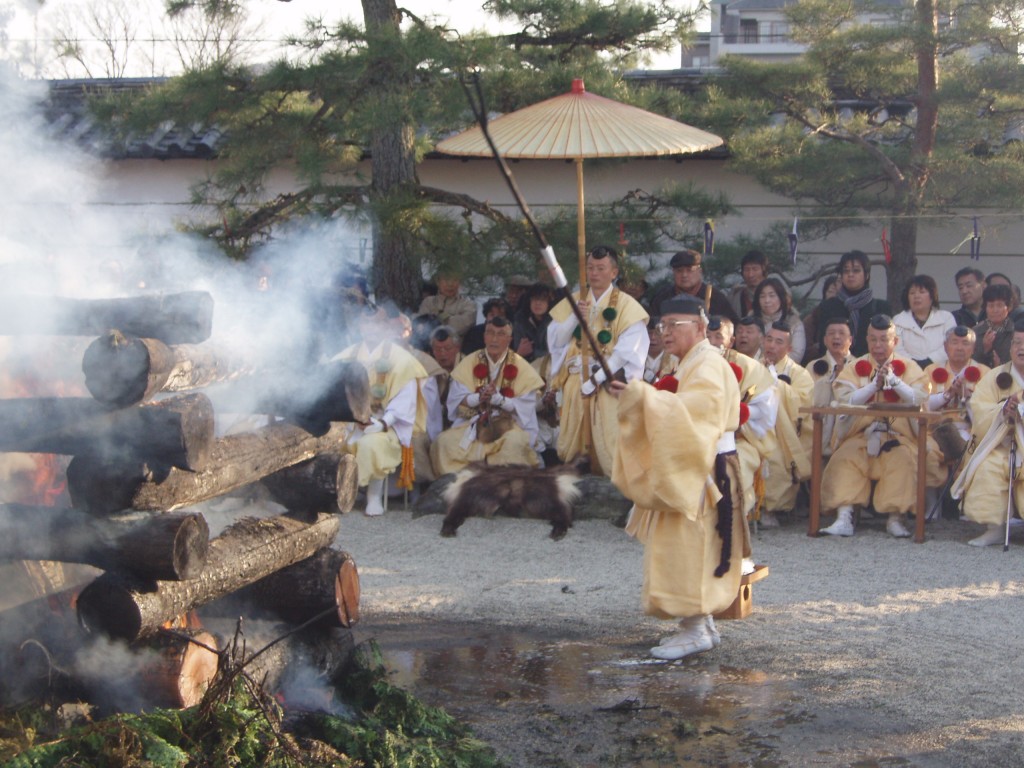
Shugendo fire ceremony attended by yamabushi (mountain ascetics)
When he was about 40 years old, he happened to learn that the Kumano Shugen group hosted a seven-day walk from Kumano to Yoshino, Nara Prefecture. So he joined the mountain ascetics to participate in the walk.
That was how it all started for Sakamoto, and shugendo came to be very important to him. His parents are devout members of the Shingon sect of Buddhism and made the Shikoku Pilgrimage to visit 88 temples and the Saigoku Kannon Pilgrimage to visit 33 temples. With that family background, Sakamoto hoped to become closer to the mountain ascetics he was among.
About 15 years ago, he told Ryoei Takagi, vice chief priest of Seigantoji temple, that he and a group of mountaineers would climb Mt. Kinpusan, which lies on the border of Nagano and Yamanashi prefectures. The priest then gave him a wooden plaque meant to be a record of ascetic practice. These plaques have been offered to the deities on sacred mountain peaks by ascetics in Kumano for more than 1,000 years.
Sakamoto offered the plaque at the mountain peak, while wondering if he was truly eligible to do so. When descending the mountain, however, he fell on a road that was easy for him to cross and broke a rib.
“[The accident happened because] I performed the offering half-heartedly,” he thought and felt in awe of mountains for the first time.
The about 200-kilometer journey from Kumano to Yoshino is called the Kumano Omine Okugake. The altitude of some high and low points of the route differ by more than 1,000 meters. Participants on the seven-day trek walk more than 10 hours a day over steep rises and descents, a challenge that makes them feel like they’re walking several times the actual distance.
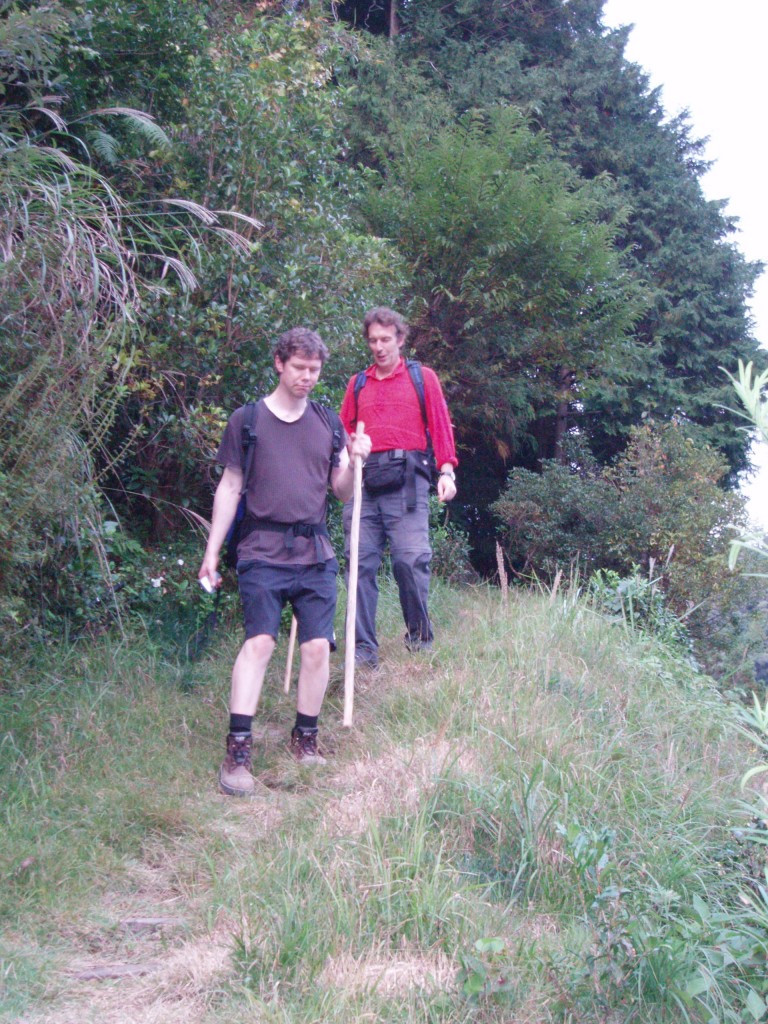
Kumano hiking. There are various trails which can take anything from one to seven days.
Walking through the dense forest on the route, many people performing ascetic practice sense the deities living in such vast nature. They are sometimes met by caves, huge trees that would need more than 10 people to encircle them, and round, taller-than-human rocks inscribed with Sanskrit characters. Each time, the group blows on the shell horn to purify the places and chant Hannya Shinkyo, the Heart Sutra.
Five years ago, Sakamoto was appointed as a guide to lead the Kumano Shugen group’s walk. The role is very important, as guides in ancient times are said to have been assigned to lead reigning emperors and former emperors when they visited Kumano. “I was very happy, because I felt like I was being allowed to be part of a history that dates back 1,000 years,” Sakamoto said.
Since the area encompassing the route was registered as a UNESCO World Heritage site in 2004 under the title Sacred Sites and Pilgrimage Routes in the Kii Mountain Range, Sakamoto has had to safely guide groups of more than 200 people, including people who are not part of Kumano Shugen. He always remains cautious and considerate. “I always tell myself that I should be humble toward nature,” Sakamoto said.
Reaching the highest point of a steep mountain path while guiding a group, he first sees the broad blue sky. When he looks back, he can see at a glance the distance he has covered. “I feel as if the surrounding mountains were within my reach and even the Kumano Nada sea, though I can’t see it,” Sakamoto said. The legendary En no Gyoja, the supposed founder of shugendo, probably felt the same way when he traveled across the nation for his ascetic practice.
After blowing shell horns in front of the Sho no Iwaya cave and completing their last practice of the year, Kumano Shugen’s mountain ascetics began descending a narrow mountain path and reached its foot right before sunset.
Several years ago, they saw the full moon illuminating the area like daytime as soon as they reached this location on a freezing night when icicles were seen hanging from rocky areas. “This means the mountains responded to our practice,” Sakamoto said. Everyone was thinking the same, and the ascetics blew horns and recited the Heart Sutra.
In addition to mountain practice, once a month Sakamoto conducts a rite and prays at a temple near his home in Kishiwada, Osaka Prefecture. The prayer is meant to send people’s various wishes to the deities. “It may be difficult for us to find the meaning of living now, but by being distant from social status, constraint or demands [during practice], we have time to think of what we are,” Sakamoto said. After beginning ascetic practice, he feels more comfortable at work.
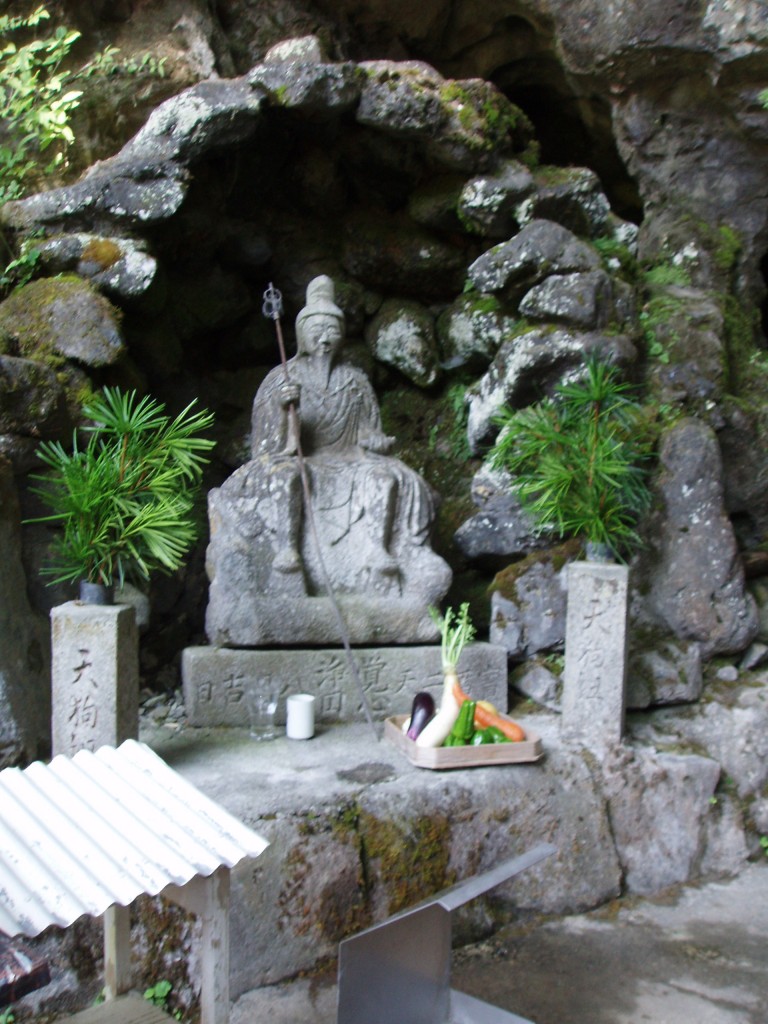
En no Gyoja, legendary founder of Shugendo
Revived in 1988
The Kumano Omine Okugake route connects the three Kumano Sanzan shrines in Wakayama Prefecture, including Kumano Hongu Taisha, with Mt. Yoshino in Nara Prefecture. It was deserted after shugendo was banned by an 1872 law, but the postwar Constitution guarantees freedom of religion. Thus, local people rebuilt a path for practice that had been impassable, and the Kumano Shugen group revived the okugake practice in 1988.
Shugendo is a religion combining Shintoism and Buddhism with Japan’s ancient mountain worship. It has been popular since the Heian period (794-1192). Shugendo was supposedly founded by En no Gyoja, a legendary mountain ascetic during the Nara period (710-784). There are records of his visits to sacred mountains across the nation. Legend has it that he could fly and manipulate fierce deities with witchcraft.

For those who are living in Europe, there is a Shômudo hermitage in France with an excellent website of Shugendo in French and English:
http://www.shugendo.fr/en